This is a device capable of linearly controlling the power output of resistive loads. It allows you to adjust the power of the resistive load directly via an app or API interface.
If you have obtained a WPC series power controller, there are a few possible modes of operation:
This device can work together with the IAMMETER energy meter to automatically save money(electricity billing) for customers. The cost-saving calculation formula is as follows:
Suppose a customer has a 3.5 kW photovoltaic system and a heater with a peak power of 3.5 kW.
Based on an estimate that the 3.5 kW heater consumes 12 kWh of electricity per day, and assuming that without this device, the photovoltaic system can provide only 50% of the energy needed by the heater on average each day (when the solar power output is less than the heater's power, electricity will be drawn from the grid to power the heater), meaning 6 kWh would need to be sourced from the grid.
Now, with this device, the heater is powered 100% by solar energy, which means the customer saves an additional 6 kWh of energy consumption per day. Multiply this by the electricity price, and that’s the amount of money this device saves you each day.
This optimized use of solar energy is even more noticeable on cloudy days. On cloudy days, it’s possible that the photovoltaic inverter generates 15 kWh, with 10 kWh fed back into the grid. The heater needs 12 kWh, of which 10 kWh would typically be drawn from the grid. However, with this device, even on cloudy days, the heater’s entire power consumption can still be provided by solar energy, saving the customer even more on electricity costs.
You can refer to the following sections for more actual test results.
Single-phase controller
Operating voltage: 240V
Maximum control power: 3.7 kW
Dimensions:
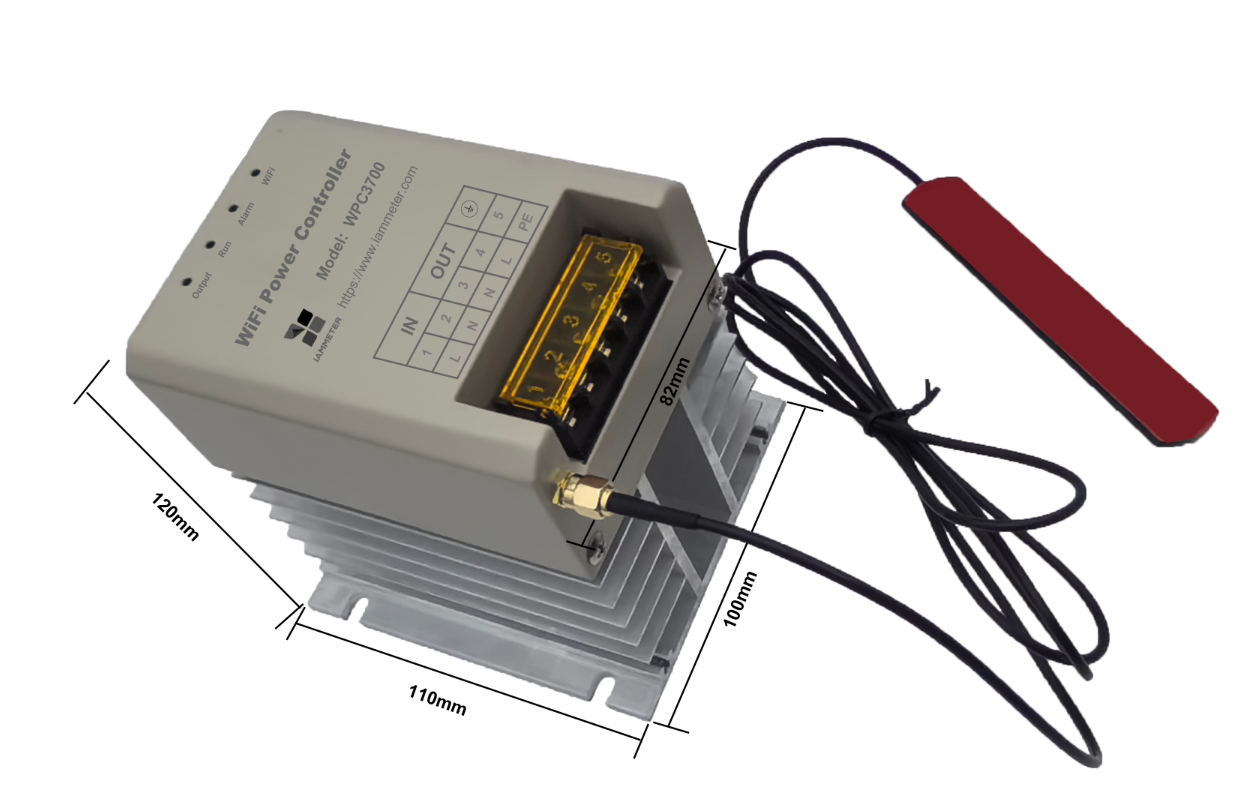
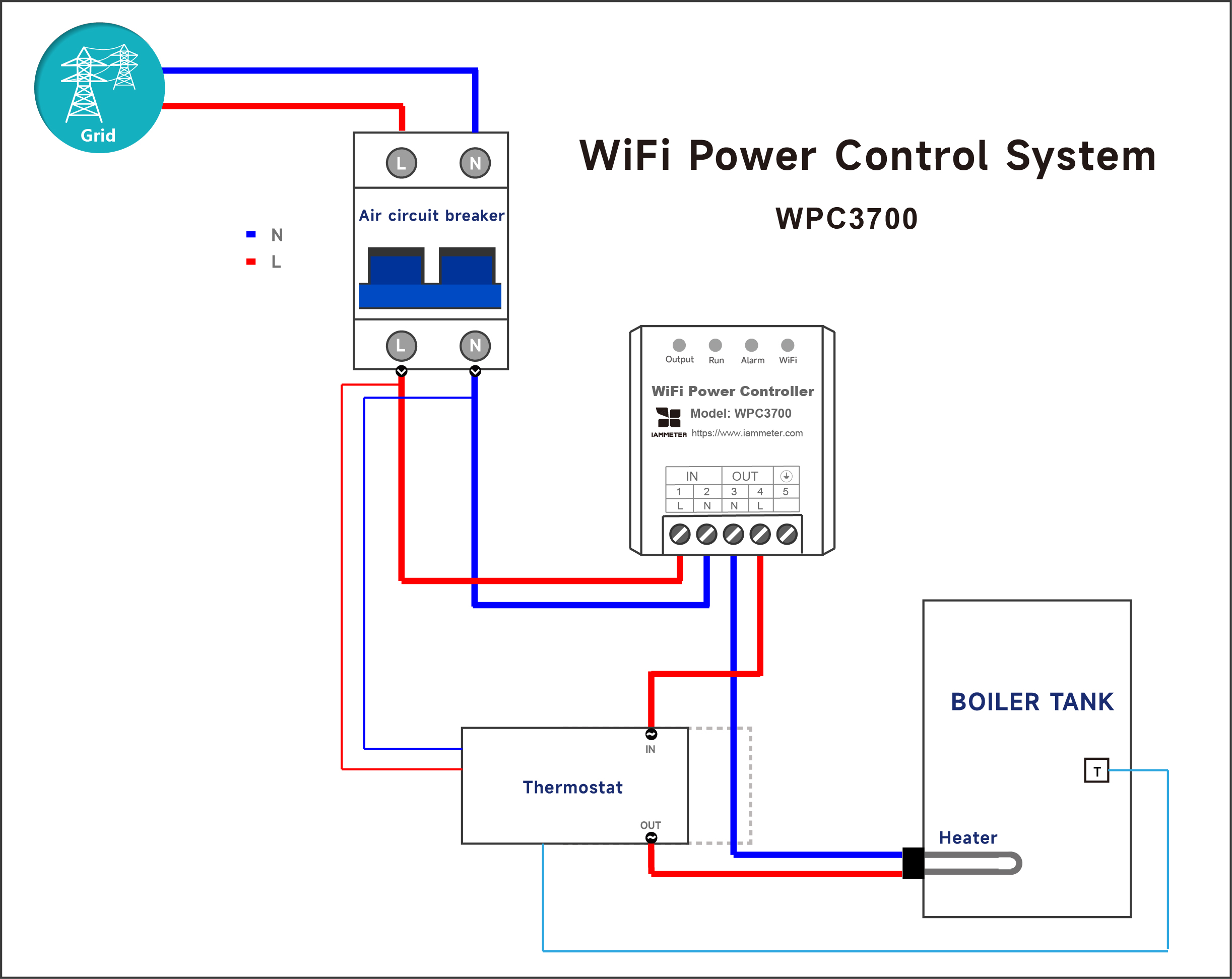
The “WiFi Power Controller” can be directly controlled via an app or API commands, making it easy to integrate with Home Assistant, NodeRed, and other third-party platforms.
Here are some solutions:
Heat the water heater using solar surplus @ Home Assistant
Heat the water heater using solar surplus @ NodeRed
This is our recommended usage.
Users can set a grid power threshold, allowing the WPC3700 to control the resistive load only when the grid power consumption is below the threshold (WPC3700 adjusts the resistive load power in real-time based on the feed-in power). For example, if the grid threshold is set to 0, the boiler heater will operate entirely on solar surplus power. This reduces grid power consumption while increasing the self-consumption rate of the solar system.
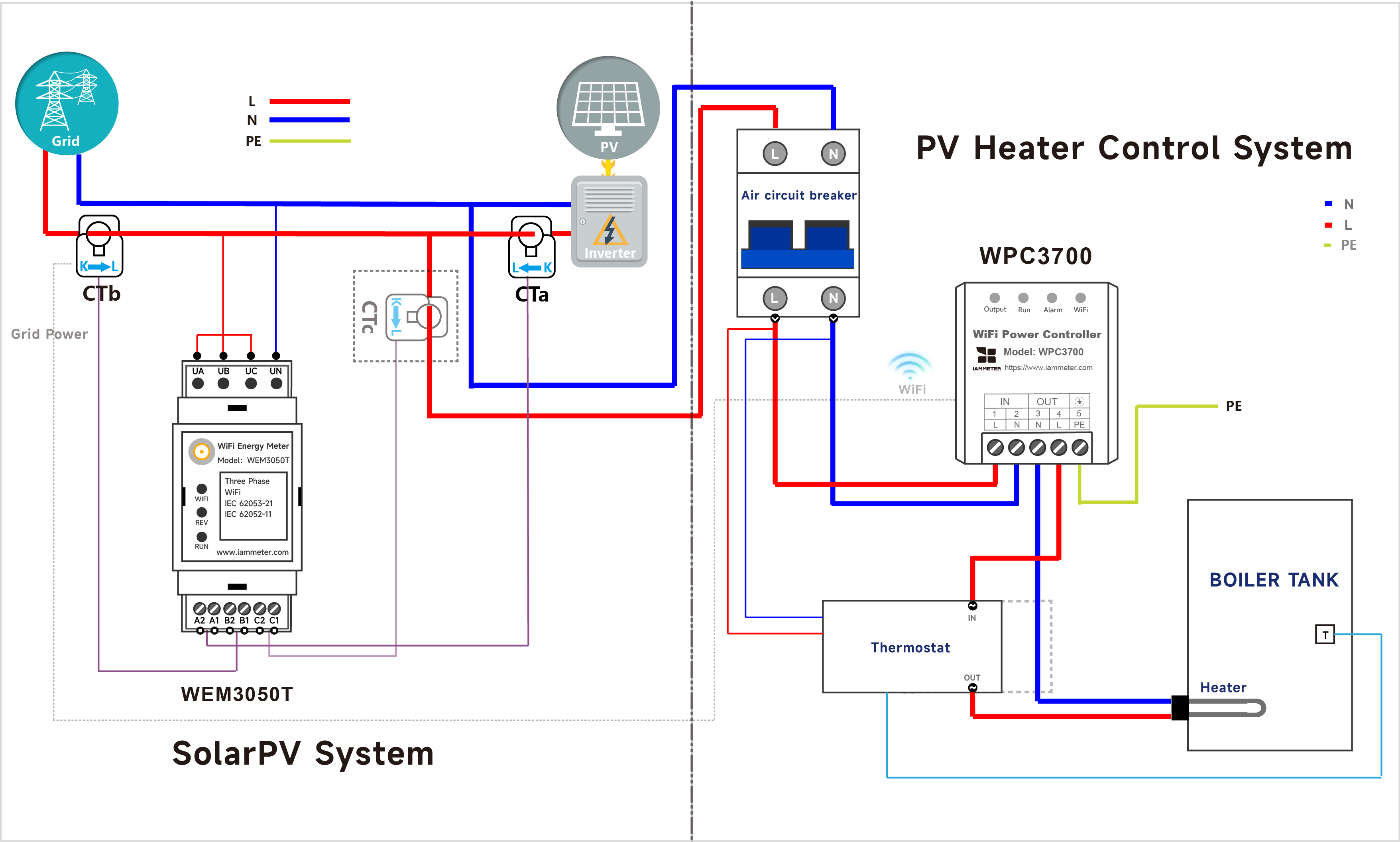
The following two images show a comparison before and after introducing the “WiFi Power Controller.”
Original link: Results from SCR-485
Before using the “WiFi Power Controller”
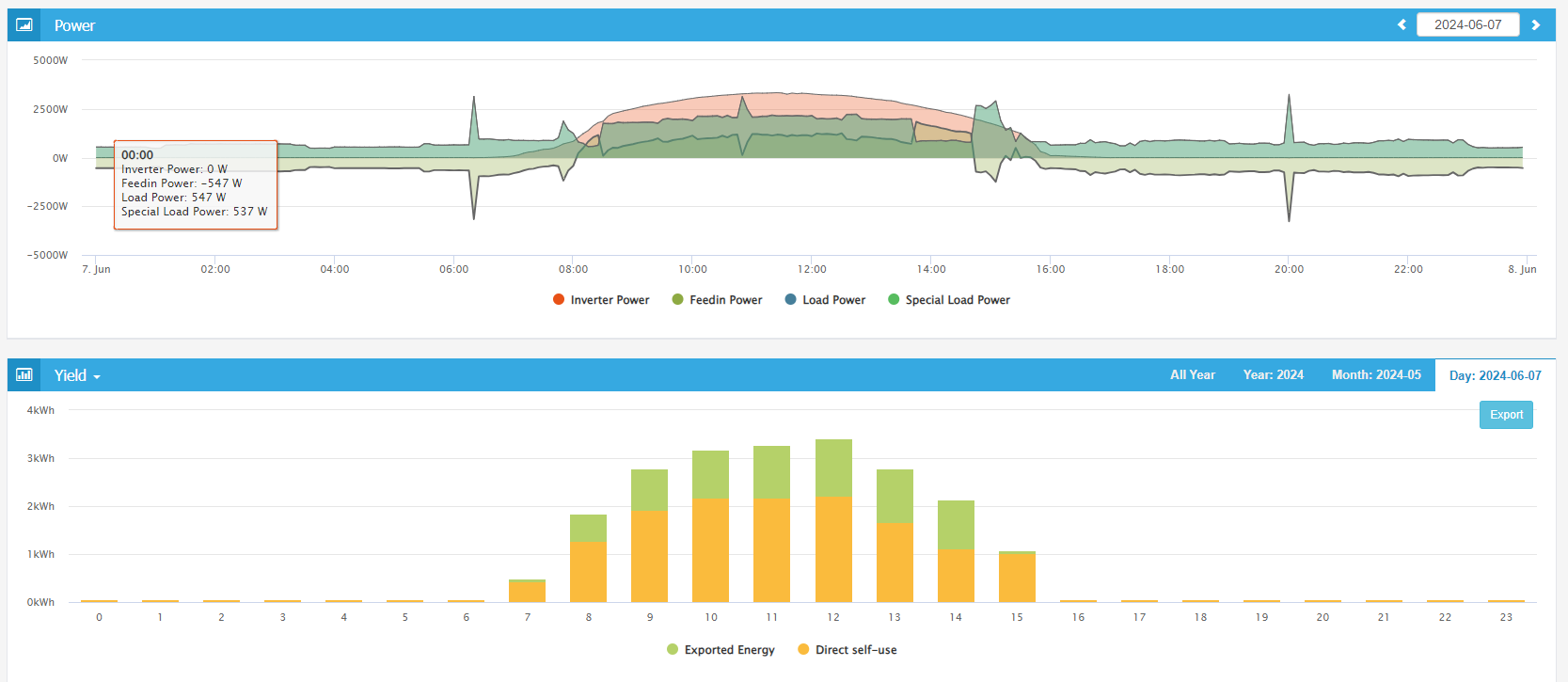
After using the “WiFi Power Controller”
As seen in the images, the “WiFi Power Controller” adjusts the resistive load power (boiler heater) in real-time based on grid power.
The customer has set the system to heat the water heater entirely using solar surplus, which means that from now on, the electricity costs for heating the water are completely saved.
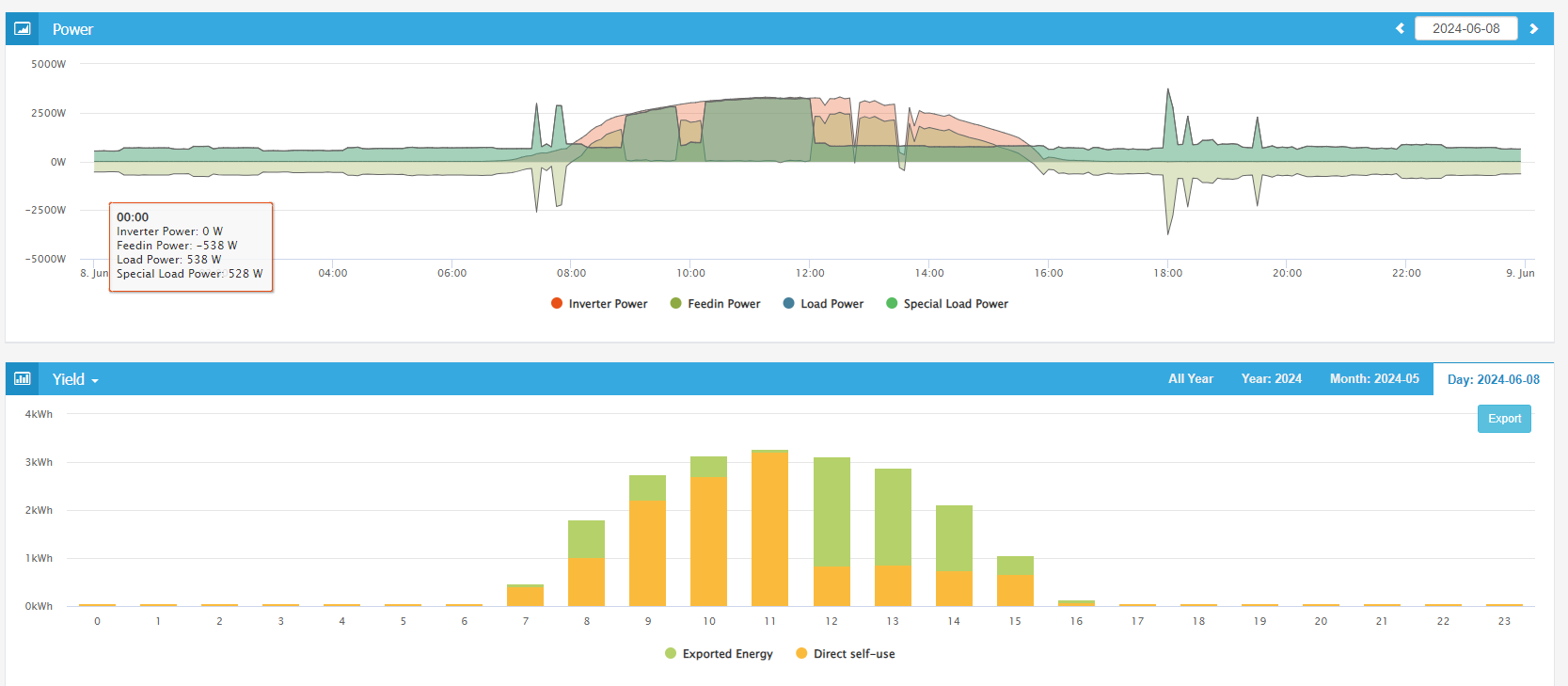
The effect is even more pronounced on cloudy days when almost all the PV energy is fully utilized, as shown in the image below.
For more details, see https://imeter.club/topic/606#content3290
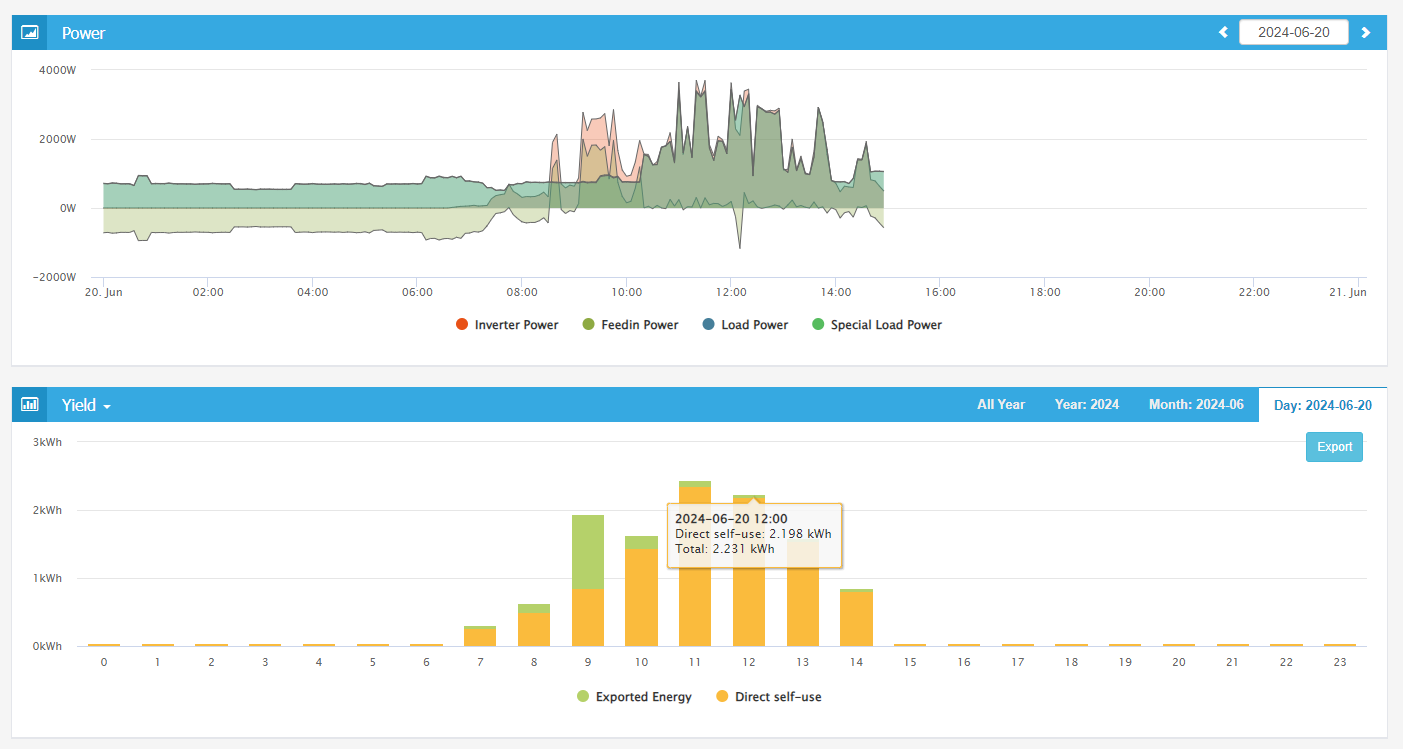
Quickstart manual for SCR-485, step by step tutorial
Activities - Apply for the Linear Power Controller (SCR-485)
ESP32 + SCR module: Linearly adjust the power output of resistive loads, such as heaters
Three Phase Wi-Fi Energy Meter (WEM3080T)
Single Phase Wi-Fi Energy Meter (WEM3080)
Three Phase Wi-Fi Energy Meter (WEM3046T)
Three Phase Wi-Fi Energy Meter (WEM3050T)